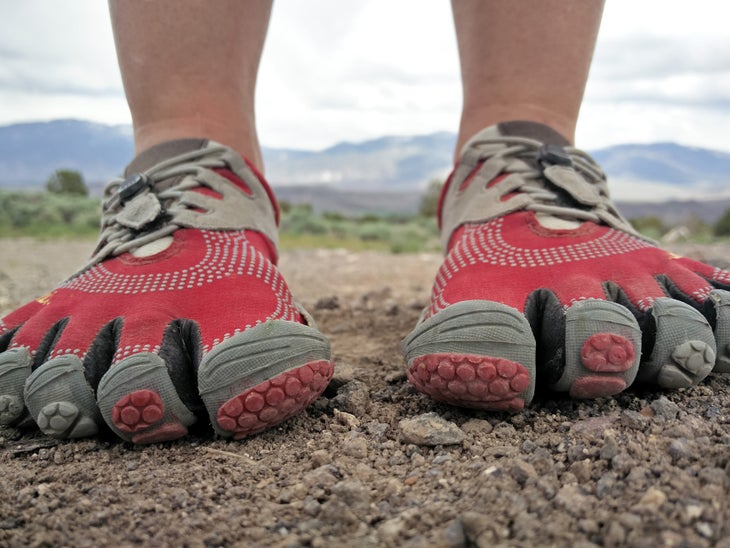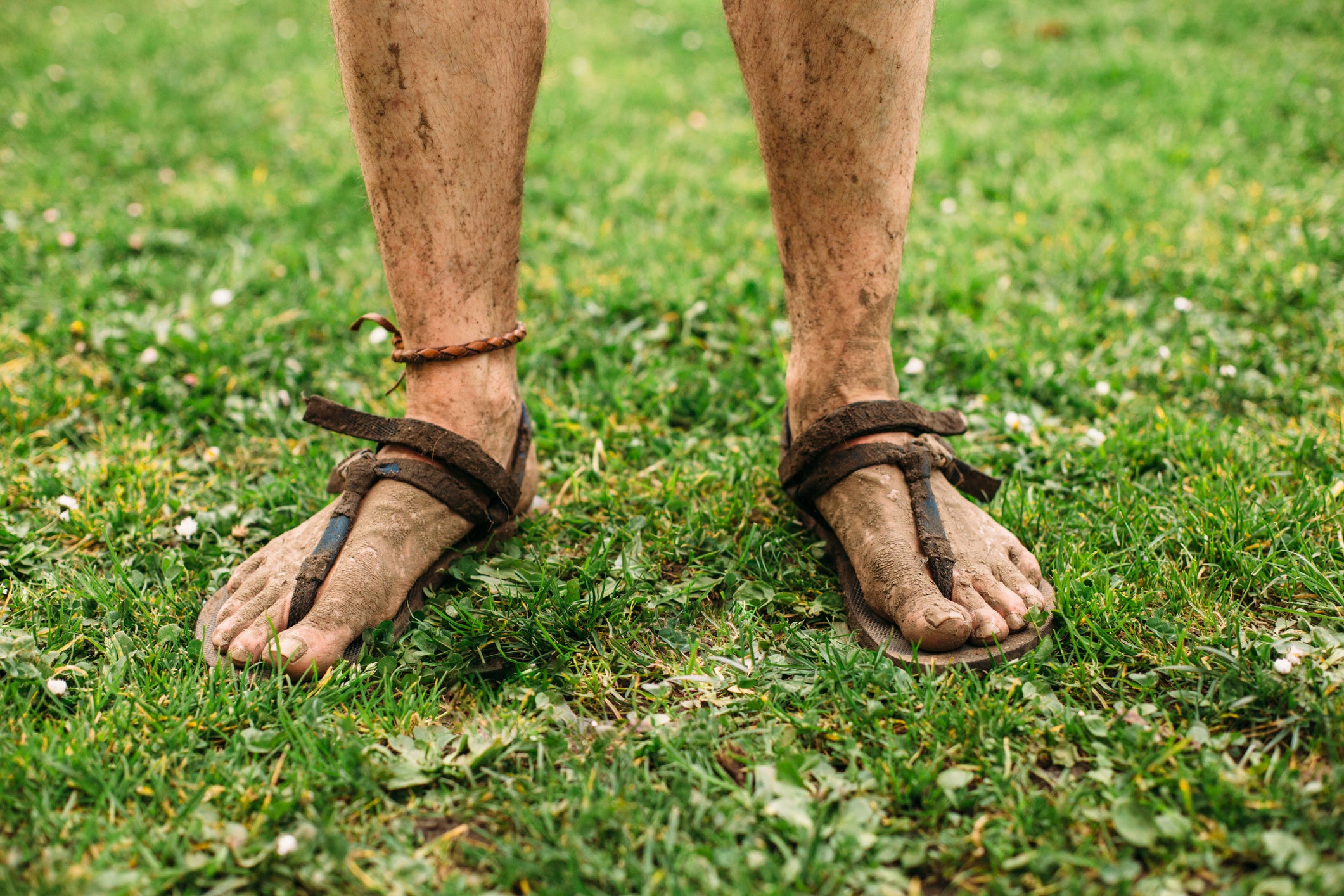In January 2022, Zach Zenteno began training for his first Ironman. By March, the 22-year-old from Seattle was dealing with a string of overuse injuries that kept him off his feet.
“Severe back pain and shin splints led me to the chiropractor,” he said.
There, he learned that the elevated heel of his running shoes might be contributing to a non-natural running gait, possibly leading to his injuries.
“With an approaching August race deadline, I was incredibly eager to do anything possible to heal up and get back in the saddle,” he said, “so I heeded his recommendations and looked into [minimal shoes].”
This recommendation doesn’t surprise , MPT, SCS. He’s a physical therapist, professor and researcher at Oregon State University, author of Running Rewired, consultant, and coach, and he believes that runners should have a minimal shoe in their collection.
However, that comes with some caveats – the first of which is that there’s no industry standard on what “minimal” means regarding a shoe.
“Some people think it’s a wide toe box, some people think it’s zero-cushion, some people think it only refers to [Vibram] FiveFingers,” he said.
(For the purposes of this article, we’ll consider any shoes with a toe box that allows the toes to spread naturally, does not have an excessive amount of cushion, and has a low- to zero-drop sole to be minimal.)
Still, his advice remains the same across definitions. “Should they wear [minimal shoes] a lot when not running? Yes,” Dicharry said.
When it comes to wearing them for running and racing, his answer is far less emphatic.
“Should they wear them when running? Sometimes,” he said. “Should they wear them while racing? They can, but it is going to make their engine work a bit harder, and that costs seconds on the clock, so most people turn away as soon as you mention that.”
His wholehearted recommendation of a minimal shoe for runners during non-running activities has to do with the most common issues he sees in the types of traditional footwear they’d normally wear, such as:
- Symmetry. Shoes are generally pretty darn symmetrical, but, Dicharry said, “Feet are anything but symmetric.”
- Shape. Fashion has influenced shoes to be narrower in the forefoot than the ball of the foot. “Feet are not shaped that way,” Dicharry said. And then, there’s the fact that a narrower base isn’t as stable as a wide one. “If toe boxes were wider, every person on the planet would be able to stabilize their body better,” he said. “It’s just simple engineering.”
- Cushion. “Shoes have evolved to have thick cushions underfoot, and every single study on cushioned surfaces [shoes and otherwise] show that cushioned surfaces impair a person’s ability to feel and sense where their foot is,” he said. That proprioception (or the body’s ability to sense position) may be even more closely tied to the problems people tend to experience with their bodies than the strength of the feet.
- Drop. “The majority of dress, recreational, and sport shoes have a heel that’s higher than the forefoot,” he said, and this throws off stability, posture, and more, since instead of our body adapting to the way our feet land on the ground, it’s adapting to that heel drop.
Incorporating minimal footwear into your daily routine of low-impact activities helps your feet – and the rest of your body – adapt to a natural stance and posture without the impact of running.

The Benefits of a Minimal Shoe for Daily Wear
While wearing a minimal shoe for daily, non-running activities likely means you’re wearing them while recovering from your running workouts, Dicharry is quick to point out that they are not a magical recovery tool that makes the wearer immune to injury. In fact, he said, “Minimal shoes do not prevent injury. That has never been shown.”
What has been shown, however, is that they shift loads within the foot, which also creates a shift for the knees, hips, and even the spine. This ties into , which states that tissues adapt based on the stresses you give. “If you gradually load the foot, ankle, and all the parts upstream properly, then they develop properly and strong, and you sync these good parts with good connection to your nervous system, so you get better stability, balance, and control,” Dicharry said.
So, with this understanding, stress is a good thing – and regular wear of a minimal shoe demands slightly more stress, or “micro-training,” as he calls it, from the body than a traditional shoe. That’s exactly what helps improve the body’s longevity and durability.
And while there’s a lot of talk about , he argues that strength may not be the biggest draw. Foot strength should be directly measurable, he said, and, “The reality is that some studies show this happens, and others don’t. .”
In Dicharry’s experience, the bigger benefit is actually a boost to , or the body’s ability to sense its position. “Gains in proprioception stem from improving the mind-body connection,” he said. “They are neural adaptations, not muscle capacity adaptations.” Think of it like wearing gloves to tie your shoes. “You aren’t any weaker with gloves, but it’s harder to feel what you’re doing; therefore, we lose precision, coordination, and do a poor job tying our shoes,” he said. “Less between you and your task is better.”
How a Good Thing Goes Wrong
That feeling of connection is what people tend to love right away about a minimal shoe, said Dicharry; and proprioception can get better quickly, even though tissue adaptations take much longer.
And that’s precisely what occurred with Zenteno. He went down the minimal footwear rabbit hole, devouring Born to Run and learning everything he could about the concept. “I figured that nature can design a much better shoe than Nike or Adidas ever could, so I ditched my old running shoes and picked up a pair of ,” he said. “The feedback was immediate when I gave it a try.” Zenteno absolutely loved that feeling – so much so that, despite the warnings he’d read, he didn’t take the transition period as seriously as he should and ramped up his mileage. By May, he was injured – again.
Fortunately, Zenteno understood where he’d gone wrong, and although he remained sold on the barefoot concept, he realized he simply didn’t have enough time to allow his body to adjust to that type of shoe before his race. He switched to a shoe with a bit more padding and, once he’d healed, those shoes carried him through his training and race day without further injury. He walks and runs errands in the barefoot shoes, though, and is building up to short runs in them – safely, this time.
RELATED: Long After the Minimalist Revolution, Chris McDougall Returns with “Born to Run 2”
The Importance of the Right Approach to Minimalist Shoes
Of course, not every athlete is willing to own up to their mistakes like Zenteno. Dicharry has seen plenty of athletes who show up with poor coordination in their feet, which their traditional shoes have been masking. “Then, you got a brand new pair of minimal shoes and claim that they hurt you? It’s time to stop blaming your equipment and start taking responsibility for your foot health,” he said. Sure, a minimal shoe can play a role in these injuries, but people experience injuries in all kinds of shoes, and at the end of the day, “Targeted training always wins. Period,” he said. “I have yet to have an athlete with really great foot stability and strength that couldn’t run in pretty much anything they’d like with zero issues.”
That brings us back to why wearing a minimal shoe for daily activities can be so helpful – it makes it easy to incorporate them gradually, with low impact. “Wear them in the yard first, then play with the kids,” Dicharry said. “Then wear them to the gym, then on short runs where pace is not an issue.” From there, you can continue to slowly increase your use of them on different surfaces and at different paces, taking note of what works (and what doesn’t).
Whether your goal is to train and race in a minimal shoe, or you simply want to incorporate a minimal shoe into your life as a way to improve your foot health, the most important thing is to be patient. As tempting as it may be to embrace a minimal approach for every aspect of your life, remember, you’ve probably spent years training your tissues, tendons, and bones to respond to a traditional shoe. It will take a long time for it to adapt.
Just be warned that, once you get used to a minimal shoe, you might have a hard time going back. “I’ve grown accustomed to feeling the ground and not having my toes smashed together,” Zenteno said. “It genuinely makes it difficult to return to regular shoes.”


